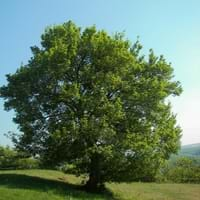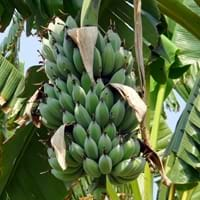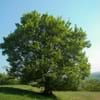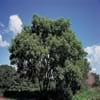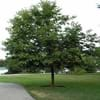Life Span
Perennial
Perennial
Origin
Europe, Northern Africa, Western Asia
Hybrid origin
Types
A. campestre var. campestre - downy fruit
A. campestre var. leiocarpum (Opiz) Wallr. (syn. A. campestre subsp. leiocarpum) - hairless fruit
Not Available
Number of Varieties
Not Available
Habitat
Forest margins, gardens, Suburban areas, Woods
Humid climates, Tropical regions
USDA Hardiness Zone
5-8
9-15
Sunset Zone
2a, 2b, 3a, 3b, 4, 5, 6, 7, 8, 9, 14, 15, 16, 17
H1, H2, 21, 22, 23, 24
Habit
Oval or Rounded
Clump-Forming
Flower Color
Green, Light Yellow
White, Light Yellow
Flower Color Modifier
Bicolor
Bicolor
Fruit Color
Light Yellow, Light Pink, Light Green, Tan
Yellow, Green, Gold
Leaf Color in Spring
Green, Light Green
Green
Leaf Color in Summer
Dark Green
Green
Leaf Color in Fall
Yellow, Gold, Tan
Green
Leaf Color in Winter
Not Available
Light Green
Leaf Shape
Maple shaped
Linear
Plant Season
Spring, Summer, Fall
Spring, Summer, Fall, Winter
Sunlight
Full Sun, Partial Sun
Full Sun, Partial Sun
Growth Rate
Slow
Very Fast
Type of Soil
Clay, Loam, Sand
Loam, Sand
The pH of Soil
Acidic, Neutral, Alkaline
Acidic, Neutral
Soil Drainage
Average
Well drained
Bloom Time
Early Spring
Indeterminate
Tolerances
Pollution, Soil Compaction
Drought
Where to Plant?
Ground
Container, Ground, Pot
How to Plant?
Grafting, Seedlings, Transplanting
Cuttings, Divison, Tissue culture
Plant Maintenance
Medium
Medium
Watering Requirements
Needs watering once a week, Requires watering in the growing season
Average Water Needs
In Summer
Lots of watering
Lots of watering
In Spring
Moderate
Moderate
In Winter
Average Water
Average Water
Soil pH
Acidic, Neutral, Alkaline
Acidic, Neutral
Soil Type
Clay, Loam, Sand
Loam, Sand
Soil Drainage Capacity
Average
Well drained
Sun Exposure
Full Sun, Partial Sun
Full Sun, Partial Sun
Pruning
Prune if you want to improve plant shape, Prune in winter, Prune to stimulate growth, Remove damaged leaves, Remove dead leaves, Remove deadheads
Remove damaged leaves, Remove dead branches, Remove dead leaves
Fertilizers
All-Purpose Liquid Fertilizer
All-Purpose Liquid Fertilizer
Pests and Diseases
Fungal Diseases
Banana aphid, Banana mosaic, Banana weevil
Plant Tolerance
Drought
Drought
Flowers
Insignificant
Showy
Flower Petal Number
Single
Single
Foliage Texture
Medium
Bold
Foliage Sheen
Glossy
Matte
Attracts
Not Available
Hummingbirds, Small mammals
Aesthetic Uses
Showy Purposes
Showy Purposes
Beauty Benefits
Not Available
Not Available
Environmental Uses
Air purification
Air purification
Medicinal Uses
Sore Eyes
Nutrients
Part of Plant Used
Bark, Sap
Flowers, Leaves
Other Uses
Grown for shade, Used in Furniture, Used in making musical instruments
Used As Food
Used As Indoor Plant
No
No
Used As Outdoor Plant
Yes
Yes
Garden Design
Feature Plant, Hedges, Screening / Wind Break, Shade Trees
Edible, Feature Plant, Fruit / Fruit Tree, Mixed Border, Tropical
Botanical Name
ACER campestre
Musa acuminata
Common Name
Field Maple, Hedge Maple
Banana, Cavendish Banana
In Hindi
फील्ड मेपल
Cavendish Banana
In German
Feld-Ahorn
Cavendish Banana
In French
Maple terrain
Cavendish Banana
In Spanish
arce de campo
Cavendish Banana
In Greek
Το πεδίο Maple
Cavendish Banana
In Portuguese
bordo de campo
Cavendish Banana
In Polish
Klon polny
Cavendish Banana
In Latin
Field Maple
Cavendish Banana
Phylum
Magnoliophyta
Magnoliophyta
Class
Magnoliopsida
Liliopsida
Order
Sapindales
Zingiberales
Family
Aceraceae
Musaceae
Clade
Angiosperms, Eudicots, Rosids
Angiosperms, Commelinids, Monocots
Tribe
Not Available
Not Available
Subfamily
Hippocastanoideae
Not Available
Difference Between Field Maple and Cavendish Banana
If you are confused whether Field Maple or Cavendish Banana are same, here are some features about those plants to help you choose better. Many people think that these two plants have the same characteristics, but one can see Field Maple and Cavendish Banana Information and learn more about it. Fertilizers required for proper growth of Field Maple are All-Purpose Liquid Fertilizer, whereas for Cavendish Banana fertilizers required are All-Purpose Liquid Fertilizer. Hence, one should know the basic difference between Field Maple and Cavendish Banana if you are planning to have them in your garden to enhance its beauty.
<
Flowering PlantsImportance of Field Maple and Cavendish Banana
Want to have the most appropriate plant for your garden? You might want to know the importance of Field Maple and Cavendish Banana. Basically, these two plants vary in many aspects. Compare Field Maple and Cavendish Banana as they differ in many characteristics such as their life, care, benefits, facts, etc. Every gardener must at least have the slightest clue about the plants he wants to plant in his garden. Compare their benefits, which differ in many ways like facts and uses. The medicinal use of Field Maple is Sore Eyes whereas of Cavendish Banana is Nutrients. Field Maple has beauty benefits as follows: Not Available while Cavendish Banana has beauty benefits as follows: Not Available.
Compare Facts of Field Maple vs Cavendish Banana
How to choose the best garden plant for your garden depending upon its facts? Here garden plant comparison will help you to solve this query. Compare the facts of Field Maple vs Cavendish Banana and know which one to choose. As garden plants have benefits and other uses, allergy is also a major drawback of plants for some people. Allergic reactions of Field Maple are Asthma whereas of Cavendish Banana have Nausea respectively. Having a fruit bearing plant in your garden can be a plus point of your garden. Field Maple has showy fruits and Cavendish Banana has showy fruits. Also Field Maple is not flowering and Cavendish Banana is not flowering . You can compare Field Maple and Cavendish Banana facts and facts of other plants too.
